
 |
NATURAL CURVES SURFBOARDS |
| |
|
| Class | Specialty | Twin Fin | |
| |
|
| Custom Orders |
| |
|
| |
[ Twin Fin ]
DESCRIPTION The Twin Fin is a fin array designed for all surfboard designs for knee high to overhead to heavy water to XXL waves. Twin fins were first developed by Tom Blake and Bob Simmons in the 1940s. They were basically sidelined during the 50s and 60s during the halcyon days of longboards. Twin fins were somewhat overlooked as well during the '60s shortboard revolution, although in 1967 Steve Lis used keel twin fins on his Fish design inspired by Bear Mirandon's "twin pin" design of Surfboards La Jolla. Mark Richards and Reno Abellira embraced the design in the mid '70s and early '80s and the twin fin configuration gained broad credibility. The narrow tails common to early single fins often limited performance due to their lack of surface area. The extra surface area in the tail of twin fin shortboards provides lift, acceleration, and speed. The extra surface area in the outlne combined with reduced drag of the twin fin configuration yields a fast, loose, and responsive surfboard. Twin fin and quad fin arrays are totally relevant and feature unique and excellent performance features on any surfboard design from contemporary shortboard designs, to all mid lengths, and longboards. DESIGN FEATURES Rocker: Speed Box or Relaxed Speed Box. Profile: Moderate foil with adequate volume. Outline: Moderate cut swallow for a classic twin or any of the other contemporary shortboard tail configurations. Bottom Contours: Convex bottom feature tri plane entry to tri plane wide point to panel vee wide point to tail. Or concave bottom featuring tri plane entry to single concave wide point to spiral vee or double concave from wide point to tail. Convex bottom perform best on wider boards. Concave bottoms perform best on narrower boards. Rails: Moderately full rail with foiled rail profile for control for bigger surfers. Lower moderately thinner rail for smaller surfers. |
| |
|
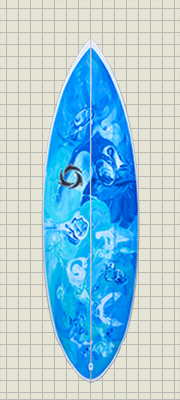 |
 |
||||
|
Double Wing RPT Twin
5' 9" x 20" x 2 7/16" |
Wing Swallow Twin Step Up
6' 0" x 20 1/4" x 2 9/16" |
| |
|
| |
$800.00 See custom orders for details |
| |
|
| |
TWIN FIN ROCKER OPTIONS |
| |
|
| |
Speed Box Rockers
Speed Box rocker is one of the two primary rocker options for most twin
fins. These designs feature an area of reduced curves under the surfer's torso
and hips when paddling and under the surfer's stance when surfing. The Speed
Box can vary moderately in length and position. The integrated tail and entry
rockers are tuned to surfer's technique and surf venues and conditions. This
rocker profile can be fine tuned to a wide variety of conditions.

|
| |
Speed Box Rocker - note the area of straighter curves through the mid section of the board with accelerated nose and tail rocker. |
| |
|
| |
Relaxed Rockers
These designs feature low tail rocker and relaxed entry rocker. This rocker
profile excels in marginal and moderate conditions by generating and carrying
speed in and out of the pocket without sacrificing control in powerful
surf.

|
| |
Relaxed Rocker - note the low relaxed rocker in the nose and tail. |
| |
|
| |
TWIN FIN RAIL PROFILE & BOTTOM CONTOUR OPTIONS |
| |
|
| |
CROWNED DECK and MODERATELY CROWNED RAIL and TRI PLANE to PANEL VEE Crowned rail profile provides control. The convex bottom offers minimum drag offering acceleration, projection, speed, and maneuverability. The panel vee wide point to tail offers exceptional rail to rail transitions. |
| |
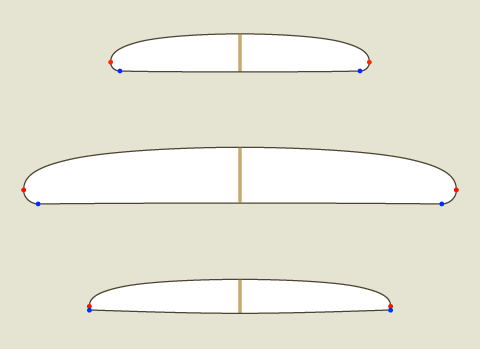
|
| |
|
| |
CROWNED DECK and MODERATELY RAIL and TRI PLANE to SINGLE to DOUBLE CONCAVE Crowned rail profile for control and single to double concave for acceleration, projection, speed, and maneuverability. Single to double concaves create great lift. Water flows from the rail to the peak of the double concave at the stringer creating notable lift in the center of the board. The spine of the double concave offers directional stability through turns. |
| |
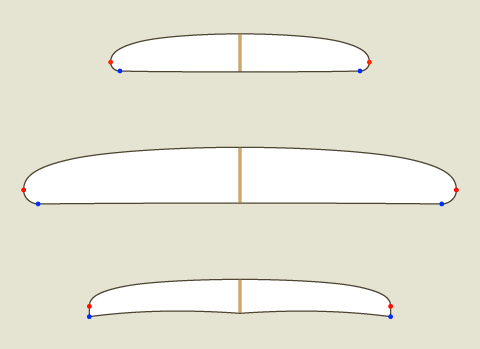
|
| |
|
| |
SURFING A TWIN FIN |
| |
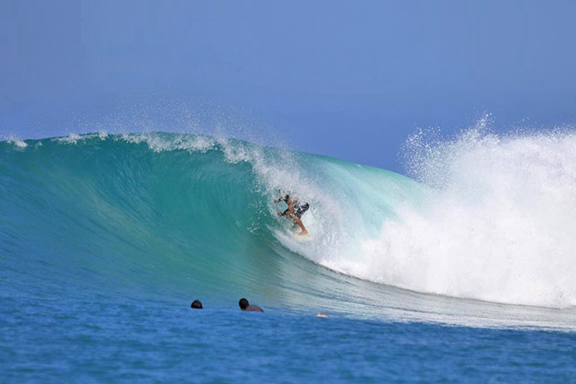
Jay Hinds Nias |
|
|
| |
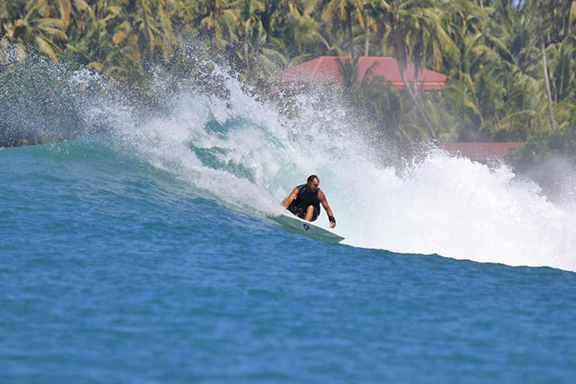
Jay Hinds Nias |
| |
|
| |
TWIN FIN VIDEOS |
| |
|
| |
Jay Hinds Nias |
| |
|
| |
Jay Hinds Nias |
| |
|
| < top of page > |